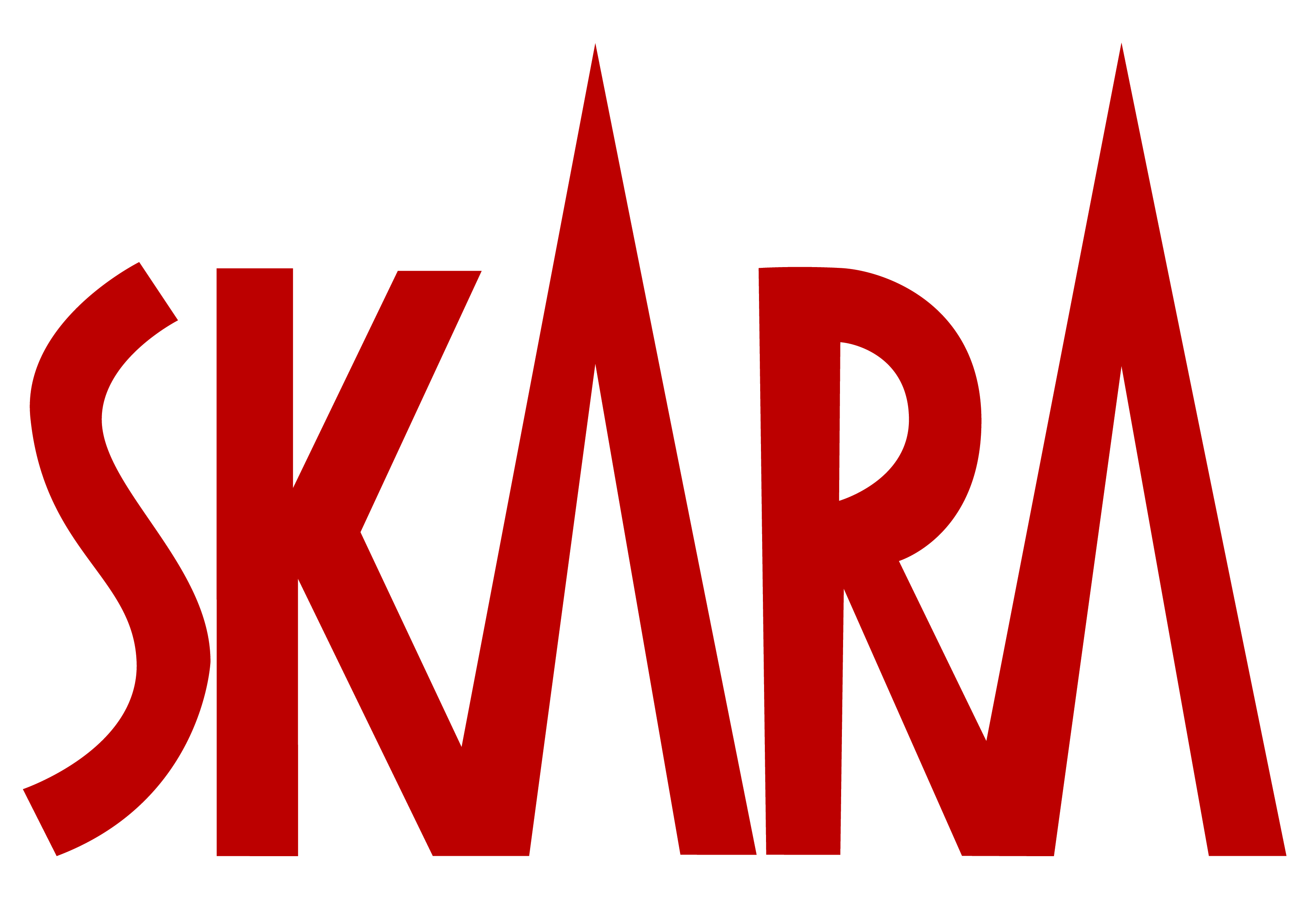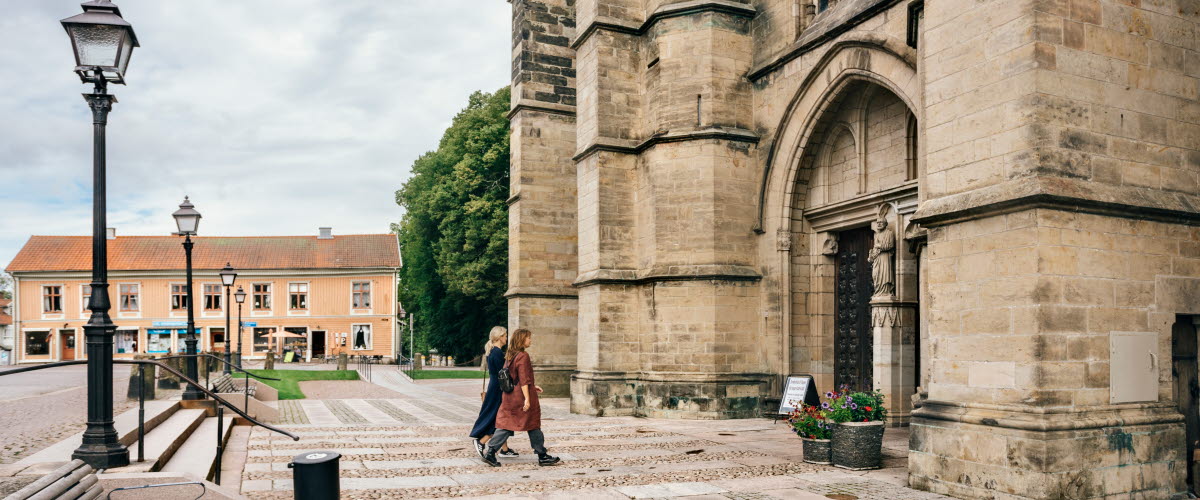Welcome to historical Skara
The area around Skara offers ancient monuments and historical signs galore. Artefacts in the oldest sites near lake Hornborgasjön prove a human presence dating back some 8 000 years. Cemeteries, cultural landscapes and churches provide tangible evidence of the area's importance through the years. For here, in the middle of Sweden where the roads crossed, it seemed natural to settle and build villages. But it is not just stories about lost times, it is actual places that you can still visit today.
Farm country from the Iron, Viking and Middle Ages
The Brunsbo meadow (Brunsbo äng) a few kilometres from Skara is one of this country's largest medieval haying fields. Once there was a village here and the archaeologists have found traces of farming from the early Iron Age down through the Viking and Middle Ages.
The ground was farmed differently in different eras, making it possible to locate cattle trails and ancient monuments. Brunnsbo country estate was acquired by the Skara bishop in the 1400s and the village was moved to open land for haying creating the Brunnsbo field. It is a lovely meadow with large oak trees and hazel bushes surrounded by a dense growth of Primula veris, wild geranium and daisies. A walk in the Brunnsbo meadow is a glorious cultural and historic experience made even more interesting by the information signs throughout. A stone's throw from the nature reserve lies Brunsbo Gästgifveri, the old bishop's residence which now houses a popular hotel with a restaurant.
Tips! A stroll in Brunsbo meadow is a delightful cultural and historical experience made even more interesting thanks to the numerous information signs on site. Don't forget your picnic
The Amundstorp stone ship at Lake Hornborga
The Amundstorp burial field comprises a well-preserved stone ship, stone circles and various other stone constructs. Thegraves are probably from the migration period in the older Iron Age (400-500 AD). It is a lovely natural site with a view of the lake from the western slope of the Billingen plateau.
Amundtorp's burial ground consists of a well-preserved ship setting, stone circles, and various types of stone settings. The graves likely date back to the 'Migration Period,' i.e., the early Iron Age around 400-500 AD. The field is situated in very beautiful nature on the western slope plateau of Mount Billingen.
Tips! A visit at sunset when the sun sets beyond Lake Hornborga and colors the ship setting in gold is magical. Why not eat or have coffee at the nearby Alekärr farm or Mellomgården's café and farm shop when you visit?
Photographer: Marcus Elmerstad
Sweden's oldest book is located in Skara
At the Västergötland Museum in Skara, visitors can admire a multitude of interesting historical objects. One of them is the Skara Missal, probably Sweden's oldest book. It consists of texts and melodies describing the Catholic Church's liturgy and was written between 1100 and 1150 by the monks of Skara. Today, the book is divided into two parts, and one can be seen in the exhibition about the Skara Missal in the Old Library in Skara. There are 44 handwritten parchment sheets preserved.
Tips! The exhibition suits both young and old. The well-organized and intriguing exhibition has an exciting mystique about it. Upstairs in the old library, you'll also find the 19th-century library with most of the original furnishings preserved.
The magnificent Cathedral
The cathedral Skara domkyrka symbolizes Skara. The first cathedral on the site was inaugurated around 1150 AD, but new discoveries have shown that there was a building here already in the 11th century. Wars and fires have ravaged the church over the years, but despite everything, it has stood firm and risen again from dust, ashes, and humiliation.
Skara Cathedral contains bishop graves and walls from the building's earliest period, but the current Gothic design dates back to the restoration of 1886-1894 under the direction of architect Helgo Zettervall. The interior is unique and includes the Soop Mausoleum and Bo Beskow's beautiful stained glass mosaic windows. And yes, Skara trousers – the name comes from the flat towers built in 1809-1810. People thought they looked like a pair of pants, and the name stuck even though the towers have clearly changed shape since then.
The oldest grave artifact in Scandinavia is the beautiful Adalvard Cup. It belonged to Bishop Adalvard (†1064) and was found in the 18th century. Before its significance was understood, it was used as the executioner's communion cup. A copy can be seen in the cathedral.
Tips! Don't miss a visit down to the crypt during your visit - during a restoration in 1947-49, a well-preserved crypt was discovered, and during the renovation of 1999, stone remains older than the 12th-century church were discovered. The latest discovery made the Gothic architecture even more apparent, and the crypt has become a peaceful prayer room open to the public.
Photographer: Monika Manowska
The Varnhem Monastery flourished in the Middle Ages
The Cistercian monks arrived in Varnhem in 1150. The fertile location on the western slope of Billingen was ideal with access to timber, stone, and drinking water. The monks built a small monastery town, and excavations have revealed an advanced water and sewage system that likely included channels for both heating and ventilation. By the late 1200s, the monastery church was the largest sacred building in Sweden, and the activity flourished for several centuries. The Reformation in the 1500s closed the monastery, and the church was abandoned.
A hundred years later, Count Magnus Gabriel de la Gardie funded a restoration, and it is thanks to him that the building is in good condition today. However, the monastery was left to decay until excavations began in the 1920s. Monastic life is well-documented, and in the museum next to the church, there are several interesting artifacts from the initial excavations. The magnificent monastery church is the burial place for Erik's royal family (11th/12th century). Here lie the founder of Stockholm, Regent Birger jarl, as well as the church's "savior," Count Magnus Gabriel de la Gardie, and his wife Princess Maria Eufrosyne.
On the hill behind Varnhem's monastery church lies the ruin of one of Sweden's oldest churches, a private farm church from the Viking Age. The place is called Kata Gård, and during excavations, archaeologists have made sensational finds that tell about the place from before the monks arrived in the 1100s. The church's crypt may very well be the country's oldest preserved room.
Tips! There is much to see in Varnhem - take it easy on your visit and experience both the exciting history of the place and the beautiful nature on the slope of Billingen. Just below the Monastery Church, the monks' lake has also been recreated, and today we can gaze out over the gleaming Klostersjön.
Church, knowledge - and culture
The name Skara likely originates from the Swedish word 'skåra/skarv,' which means a deep cut, seam, or joint. Most likely, it is the natural hub where roads met and the city emerged that gave it its name. What we do know is that Skara was an important trading and meeting place over 1000 years ago. The city grew rapidly, shaped by the church, education, and culture. Today's city may be a bit quieter than the medieval one, but its living heritage is cherished, and the people of Skara are proud to live on historic ground. Old and new, city and countryside meet at this place, and the centrally located cathedral still gives the city its unique silhouette.
Tips! Don't miss a visit in Skara's cozy small-town center with all its exciting history, sights and shops.






